Reviews
Ways of Seeing Instagram
John Berger's classic "Ways of Seeing" offers some unexpected wisdom for the age of social media.
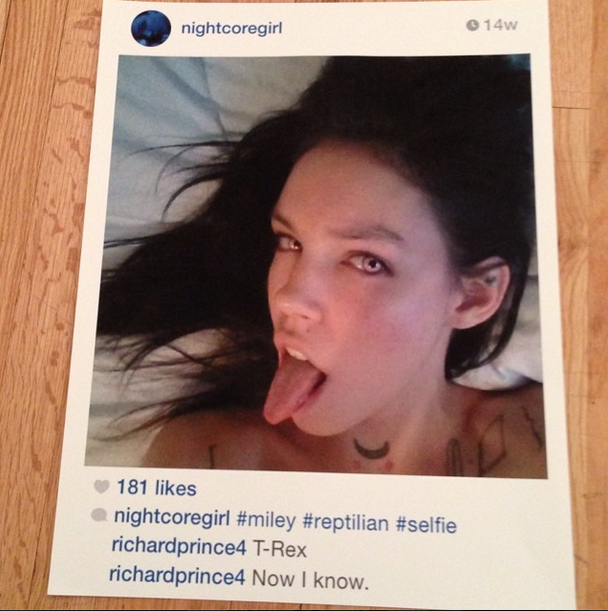
John Berger's classic "Ways of Seeing" offers some unexpected wisdom for the age of social media.

Ben Davis

Richard Prince is making art by recycling Instagram screenshots. Dealers are hawking art via Instagram. The Met has even retained an Instagram guru “to play catch-up to figure out how best to exploit this online pictorial medium.”
A four-year-old app is dominating the art conversation as no purely art-related topic is. To explain the craze, this Google Trends graph is probably all you need:
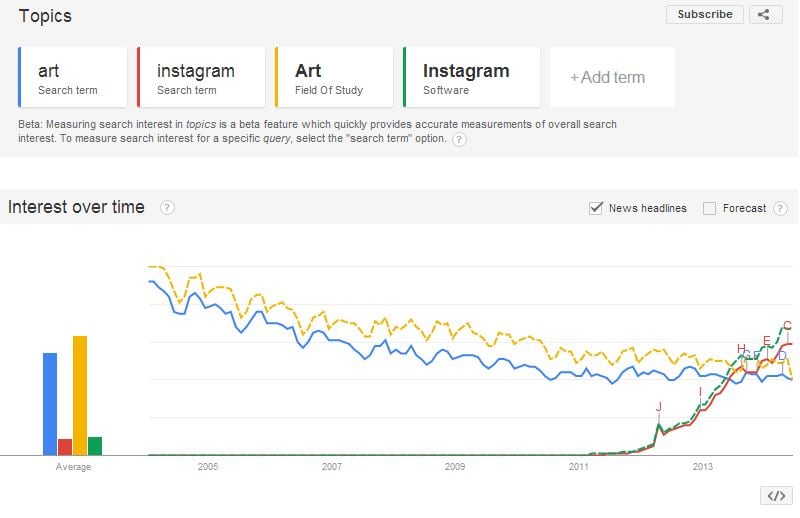
Google Trends graph comparing “Instagram” and “art.” “Search Term” includes related searches such as “nail art” and “Instagram followers;” “Topic” search also includes interest in foreign language terms like “kunst”
Perhaps it’s not surprising that the average person would be more interested in their friend’s Instagram account than, say, Sigmar Polke at MoMA—but as far as Google knows, “Instagram” has been a more interesting subject to the masses than “art” itself since sometime last year. A force that important in visual culture is probably worth having a theory about. And in fact, rather than just being swept along by the stream of images, it may be possible for art—and art history—to add something to understanding the photo-sharing obsession.
When I think about that problem, I think about John Berger’s Ways of Seeing, a work of theory that came more than four decades ago, in 1972.
For those who don’t know it, the slender tome was based on a BBC series of the same name, a work of Marxist-feminist art criticism so sharp that it would be unthinkable in mainstream culture today. The book version of Ways of Seeing has nevertheless become a foundational work of cultural studies for generations of students, with its clear, critical approach to European fine art.
Berger believed mightily in the power of painting (he was almost a romantic, if you ask me), but Ways of Seeing was, above all, an attempt to demystify its subject. He thought that the preachiness and preciousness around fine art was used, ideologically, to whitewash the past that produced it. In key ways, Ways of Seeing is about the democratic potentials of mass media in making the classics accessible to the average person, by allowing images to slip free of the stilted atmosphere of the museum, and be reintegrated into life. (He was openly indebted to the Marxist philosopher Walter Benjamin’s reverberant essay “The Work of Art in the Age of Mechanical Reproduction.”)
If you doubt that a 42-year-old BBC documentary might be a guide to the possibilities of social media, the following passage makes it pretty clear to me that it was ahead of its time on this front:
The means of reproduction are used politically and commercially to disguise or deny what their existence makes possible. But sometimes individuals use them differently.
Adults and children sometimes have boards in their bedrooms or living-rooms on which they pin pieces of paper: letters, snapshots, reproductions of paintings, newspaper cuttings, original drawings, postcards. On each board all the images belong to the same language and all are more or less equal within it, because they have been chosen in a highly personal way to match and express the experience of the room’s inhabitant. Logically, these boards should replace museums.
To be fair, that sounds a bit more like Pinterest or Tumblr than Instagram. But, then, Instagram art star Richard Prince himself has written about how it was Tumblr that inspired him to rethink his brand of appropriation art in relationship to social media:
The first time I saw Tumblr I saw it on my daughter’s computer. I said, “what’s that”? She had organized a bunch of photos according to color. As she scrolled down I was reminded about how I use[d] to look at hundreds of slides on my custom made giant light box. What I was looking at and what I was remembering wasn’t that different. The next question I asked her was, “whose images were those and did you have to ask “permission” to use them”. She looked at me like I was the “man from Mars”. “Permission? For what”? (That’s my girl)…
These days, extending that line of thinking, Prince has this to say about Instagram: “It’s almost like it was invented for someone like myself. It’s like carrying around a gallery in your pocket.” From there, it’s just a hop, skip, and a jump to Berger’s prediction that Instagram, or other things like it, “should replace museums.”
Berger was, however, very critical of contemporary media. The guy was a socialist—meaning here (contrary to the term’s Cold War usage) redistribution of wealth plus democracy in the workplace—and aware that technology was being driven by ruthless commercial logic, and consequently unlikely to deliver on its liberatory potentials. In fact, what makes Ways of Seeing’s critique of fine art so accessible is exactly the way that Berger sheds light on the more sordid dynamics at play in the Old Masters by connecting them to the sordid dynamics we are familiar with from the contemporary culture industry.
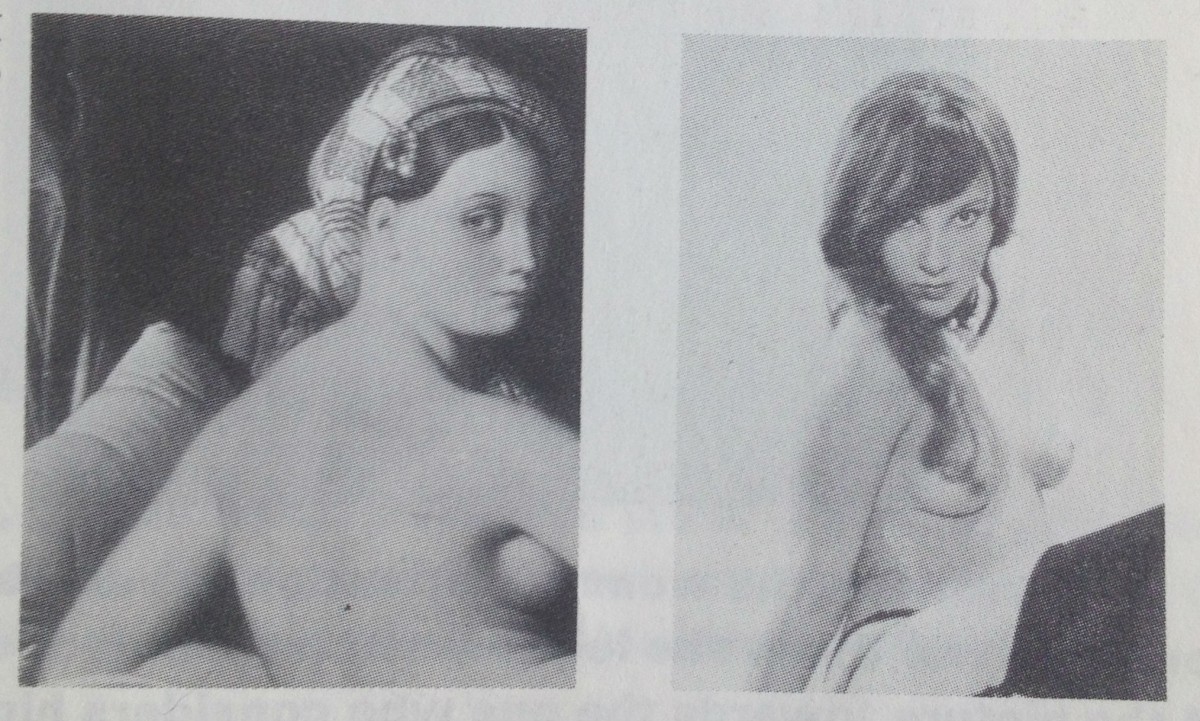
A visual comparison from Ways of Seeing, between Ingres’s La Grande Odalisque (1814) and a pinup: “Is not the expression remarkably similar in each case? It is the expression of a woman responding with calculated charm to the man whom she imagines looking at her—although she doesn’t know him.”
Thus, in Ways of Seeing’s most famous section, Berger set out to illustrate how the conventions of the average European nude, when you stripped away all the mythological rhetoric, were actually quite similar to the conventions of a pinup, with female bodies contorted to appeal to the implied male spectator. And in one long, audacious section, Berger connected the motivations behind European oil painting with the rhetoric of advertising photography (full-color glossy magazine ads were just a decade and a half old at the time Berger was writing). Painting, Berger argued, had not on the whole been about presenting the truth, but about advertising the lifestyle of the rich as fantastic and powerful.
“Oil painting, before it was anything else, was a celebration of private property. As an art-form it derived from the principle that you are what you have,” Berger wrote. “It is a mistake to think of publicity supplanting the visual art of post-Renaissance Europe; it is the last moribund form of that art.”
Of course, he also knew that there are differences between art and ads—the average work of European art, the product of an aristocratic society, was commissioned to glamorize and ratify the power of an elite, while modern consumer advertising is about promoting aspirational desire. Berger just thought that the continuities were illuminating to both, making visible the power dynamics beneath the innocent surface. Making the leap into our own time, you can see the same kinds of continuities pop up in unexpected places.
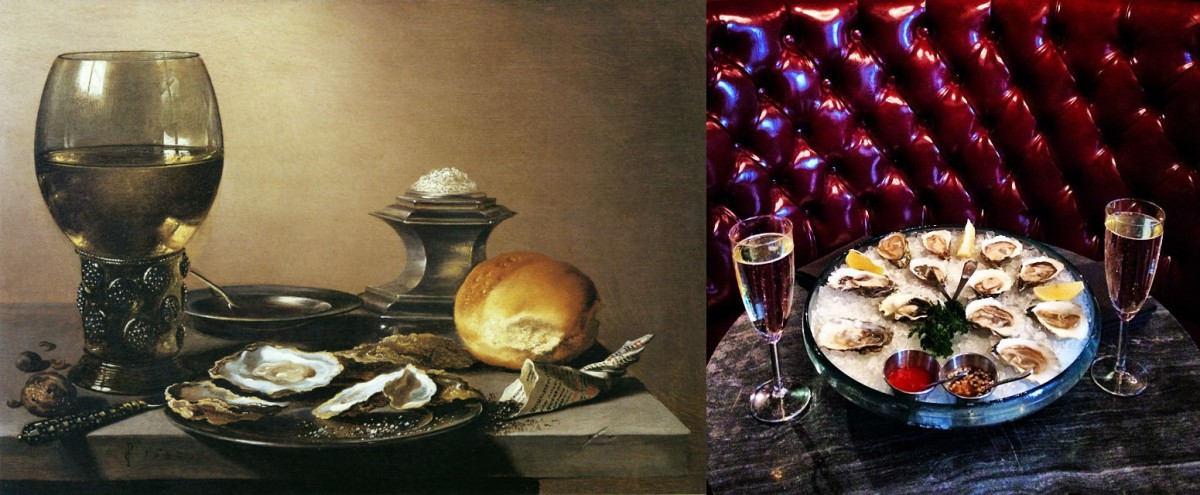
Left: Pieter Claesz, Still Life with Roemer and Oysters (1642); right: Instagram post from inahalfshell
Isn’t it striking that the most-typical and most-maligned genres of Instagram imagery happen to correspond to the primary genres of Western secular art? All that #foodporn is still-life; all those #selfies, self-portraits. All those vacation vistas are #landscape; art-historically speaking, #beachday pics evoke the hoariest cliché of middle-class leisure iconography. (As for the #nudes, I guess they are going on over on Snapchat.)
Why this (largely unintentional) echo? Because there is a sneaky continuity between the motivations behind such casual images and the power dynamics that not-so-secretly governed classic art. Last year, Slate speculated about how Instagram’s photo-boasting tends to amplify feelings of isolation, perhaps even more so than the more textual braggadocio of Facebook and Twitter. (“Seeing,” Berger writes, “comes before words.”) One expert described how Instagram in particular might accelerate the “envy spiral” of social media: “If you see beautiful photos of your friend on Instagram,” she postulated, “one way to compensate is to self-present with even better photos, and then your friend sees your photos and posts even better photos, and so on. Self-promotion triggers more self-promotion, and the world on social media gets further and further from reality.”
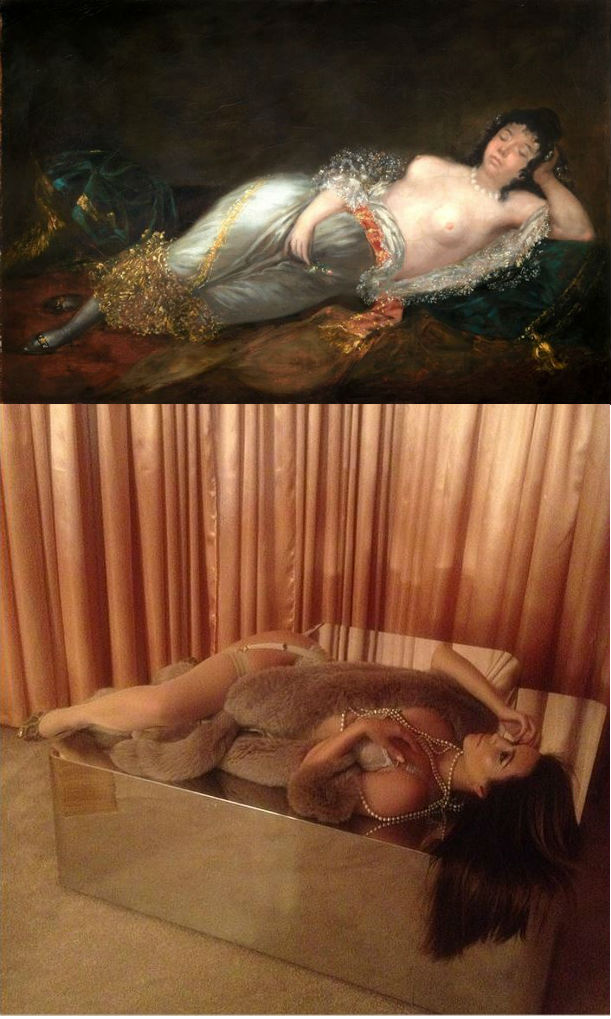
Top: Attributed to Leonardo Alenza y Nieto, Maja Dormida (1867); bottom: Kim Kardashian post tagged “#TBT day dreaming,” from Instagram
Technology has so democratized image-making that it has put the artistic power once mainly associated with aristocrats—to stylize your image and project yourself to an audience as desirable—into everyone’s hands. (Although the parallel to art as “celebration of private property” is probably most vivid in the case of those who most closely resemble modern-day aristocrats. See: “Rich Kids of Instagram”). But images retain their function as game pieces in the competition for social status. “Doesn’t this look delicious?” “Aren’t I fabulous?” “Look where I am!” “Look what I have!”
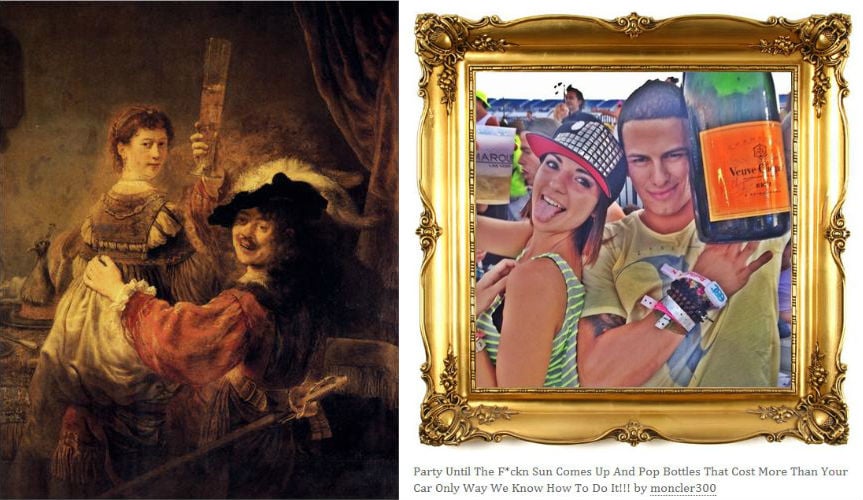
Left: Rembrandt, Self-portrait with Saskia in the Parable of the Prodigal Son (c. 1635); right: post from the Tumblr “Rich Kids of Instagram“
Maybe it seems as if there’s a tension between Berger’s enthusiasm for image-sharing and the criticism of the inanity of what technology actually does. But it’s the fact that Ways of Seeing helps square this circle, to break out of the choice between dismissive traditionalism and easy techno-optimism, that I think makes it useful. The whole purpose, for Berger, of having a political take on how images function in society is to point beyond this binary: technology makes possible many good things; political and economic conditions guarantee, however, that it is constantly warped so that the same kinds of bad patterns repeat themselves, in new and improved forms.
And so, when I think of the mixed feelings inspired by Instagram’s effortlessly artful images, I think of Berger writing about the politics of “glamour.” The passage probably seems unthinkably radical today (or maybe not, given that “U.S. More Oligarchy Than Democracy, Study Suggests” is a mainstream news headline). But its relevance as a way of thinking about social media angst is, to me, clear:
Glamour cannot exist without personal social envy being a common and widespread emotion. The industrial society which has moved towards democracy and then stopped half way is the ideal society for generating such an emotion. The pursuit of individual happiness has been acknowledged as a universal right. Yet the existing social conditions make the individual feel powerless. He lives in the contradiction between what he is and what he would like to be. Either he then becomes fully conscious of the contradiction and its causes, and so joins the political struggle for a full democracy which entails, amongst other things, the overthrow of capitalism; or else he lives, continually subject to an envy which, compounded with his sense of powerlessness, dissolves into recurrent day-dreams.
That, folks, is a revolutionary critique of FOMO, decades before the term.
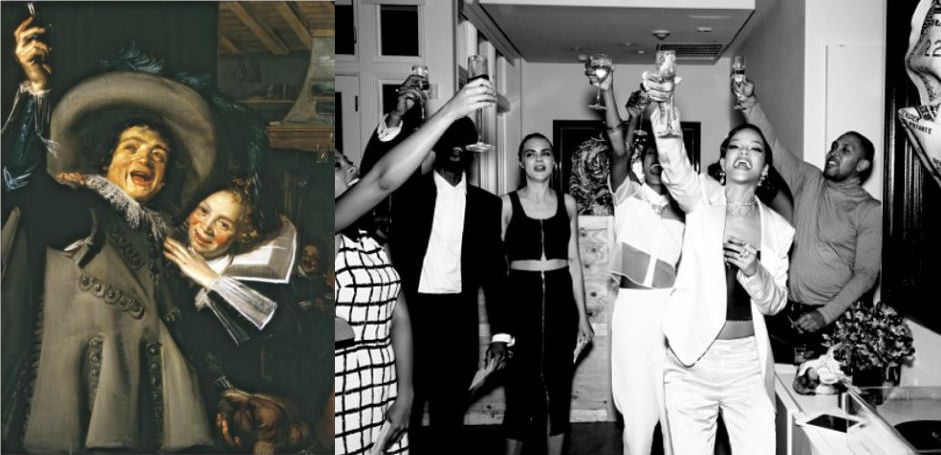
Left: Frans Hals, Young Man and Woman in an Inn (1623); right: Rihanna does New Year’s, via her Instagram
Related stories:
10 Must-Read Art Essays From June 2015